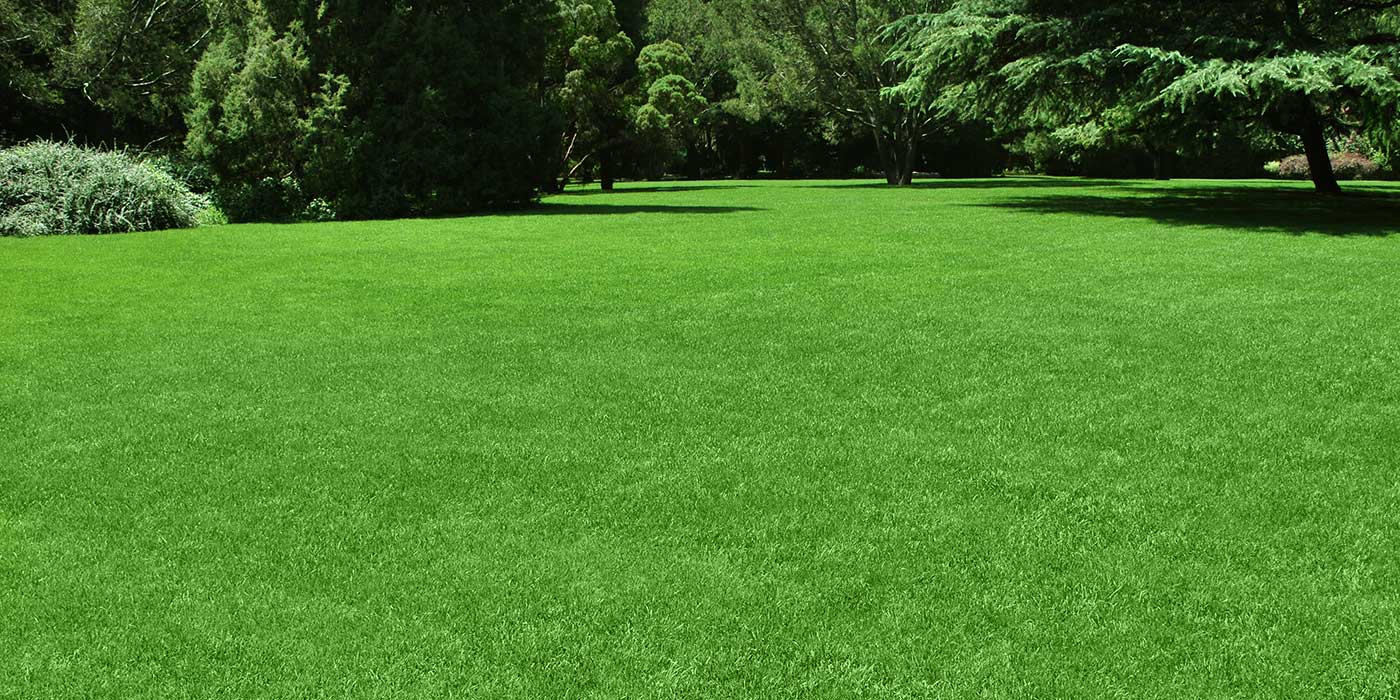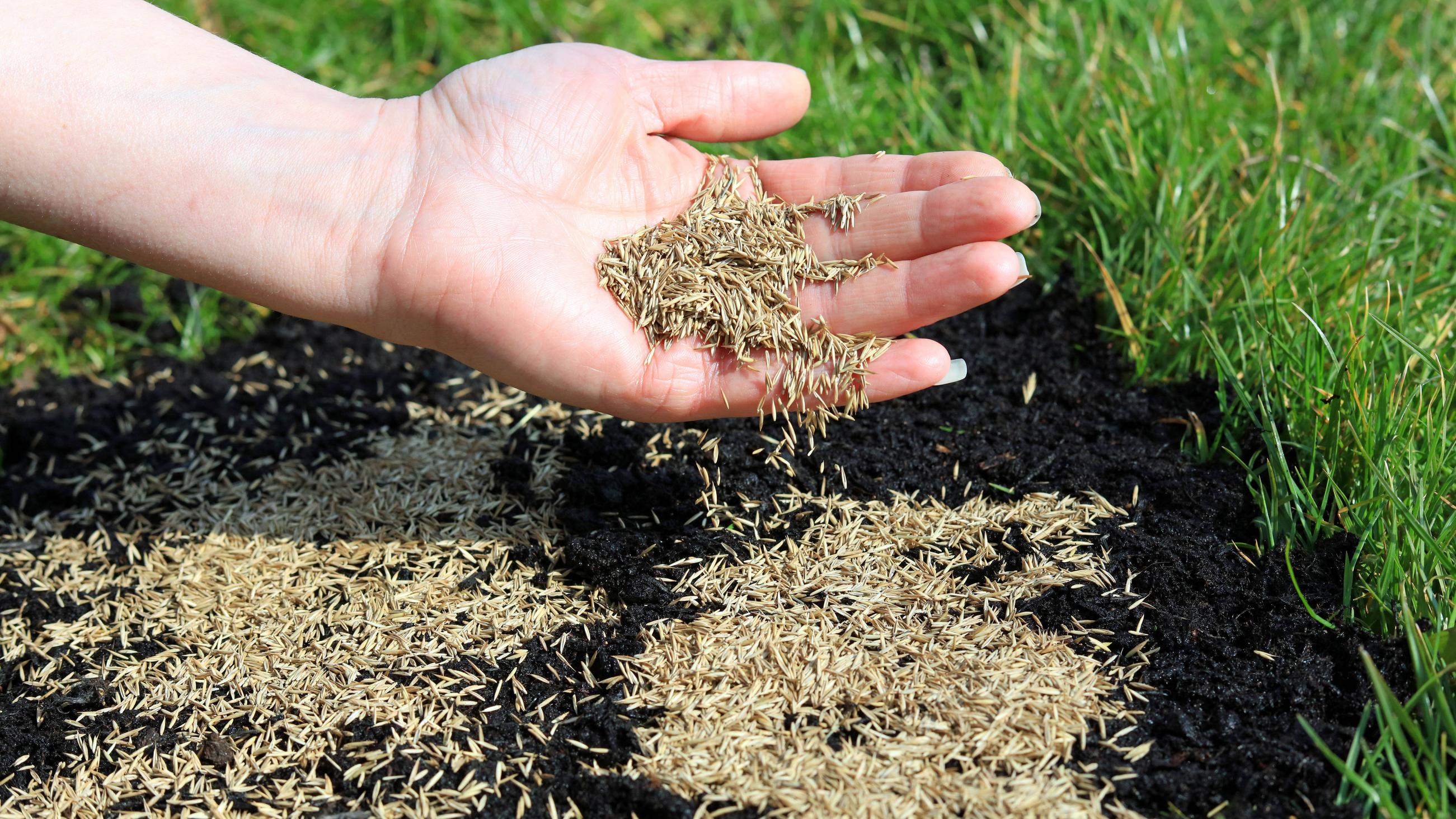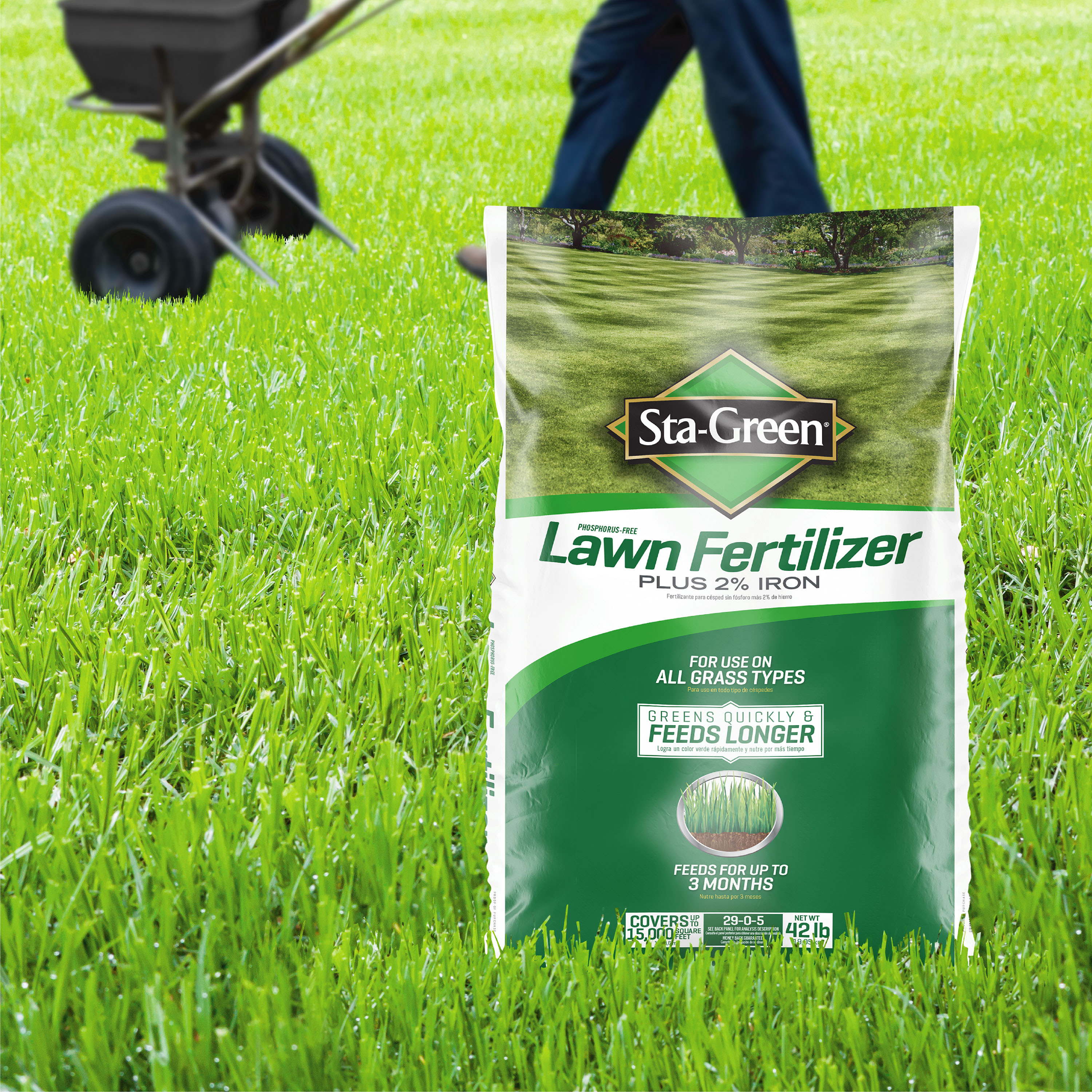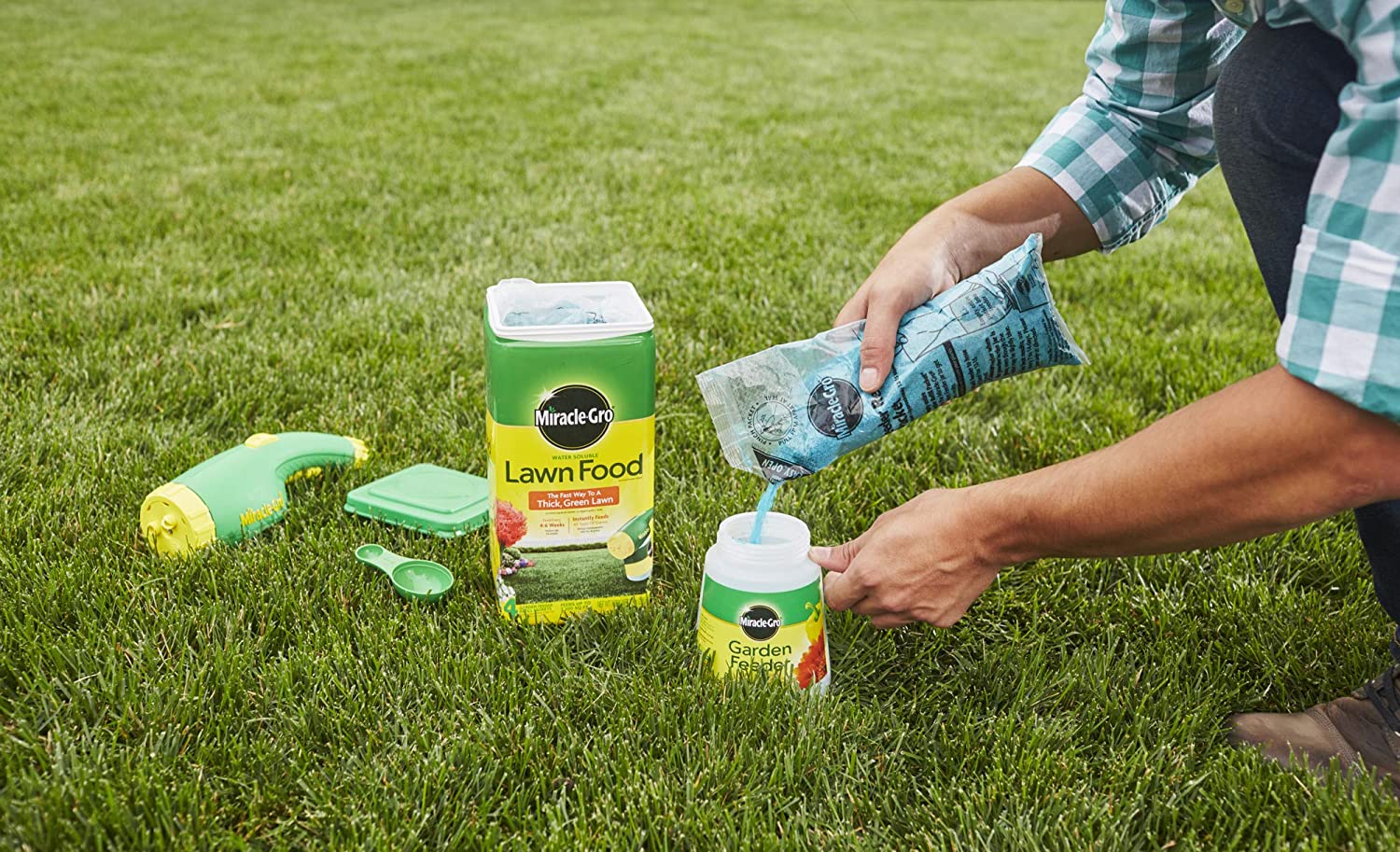Home>Gardening Techniques>When To Apply Grass Fertilizer


Gardening Techniques
When To Apply Grass Fertilizer
Modified: January 22, 2024
Discover the best time to apply grass fertilizer and improve your plant care routine. Find expert tips and advice on when and how to fertilize your lawn for optimal growth and health.
(Many of the links in this article redirect to a specific reviewed product. Your purchase of these products through affiliate links helps to generate commission for Chicagolandgardening.com, at no extra cost. Learn more)
Table of Contents
- Introduction
- Understanding Grass Fertilizer
- Factors to Consider Before Applying Grass Fertilizer
- Signs that Your Lawn Needs Fertilization
- Best Time to Apply Grass Fertilizer
- Types of Grass Fertilizers to Use
- Methods of Applying Grass Fertilizer
- Common Mistakes to Avoid When Applying Grass Fertilizer
- Conclusion
Introduction
Welcome to the world of plant care, where nurturing and beautifying your greenspace is both a rewarding and fulfilling endeavor. Whether you have a spacious backyard dotted with vibrant flowers or a small balcony adorned with potted plants, proper plant care is essential for maintaining healthy and thriving greenery. And one key aspect of plant care that should never be overlooked is fertilization.
Applying the right fertilizer at the right time can make all the difference in promoting optimal growth, lush foliage, and abundant blooms. However, understanding when to apply grass fertilizer can be a bit perplexing for beginners. But worry not! In this article, we will guide you through the ins and outs of grass fertilizer application, ensuring you can confidently give your lawn the nourishment it needs to flourish.
Grass fertilizer is specially formulated to provide essential nutrients to your lawn, such as nitrogen, phosphorus, and potassium (NPK). These nutrients play a vital role in supporting root development, enhancing color and texture, and increasing overall vitality. By understanding the factors to consider, the signs indicating your lawn needs fertilization, and the best time to apply fertilizer, you can optimize the benefits and results of your efforts.
Furthermore, the type of grass fertilizer you choose and the application method utilized will also impact the effectiveness of your lawn care regimen. We will delve into these aspects, exploring different types of fertilizers and the various ways you can apply them to maximize their impact.
Before we dive deeper into the world of grass fertilization, it’s important to mention common mistakes to avoid. These tips will ensure that your efforts yield the best possible results while minimizing any negative effects on the environment or your green spaces.
So, whether you’re a seasoned gardener or just starting your plant care journey, this article is your ultimate guide to understanding when and how to apply grass fertilizer. Let’s get started and unlock the secrets to a healthy and vibrant lawn!
Understanding Grass Fertilizer
Before we delve into the specifics of when and how to apply grass fertilizer, let’s first gain a clear understanding of what it actually is. Grass fertilizer is a blend of essential nutrients that provide nourishment to your lawn, helping it thrive and flourish. These nutrients typically include nitrogen (N), phosphorus (P), and potassium (K), commonly referred to as NPK.
Nitrogen is crucial for the growth and development of lush, green foliage. It promotes leaf and stem growth, giving your lawn a vibrant and healthy appearance. Phosphorus plays a significant role in root development, aiding in the establishment of a strong and robust root system. It also encourages flower and seed production, leading to a more bountiful blooming season. Potassium, on the other hand, helps improve overall resilience and disease resistance in your grass.
Grass fertilizer is available in different formulations, each with varying ratios of NPK. These ratios are indicated by the three numbers you may often see on fertilizer packaging (for example, 10-10-10 or 21-7-14). The numbers represent the percentage of each nutrient present in the fertilizer, in the order of nitrogen-phosphorus-potassium.
It’s important to note that not all grasses have the same fertilization requirements. Different types and varieties of grass may have varying nutrient needs, growth rates, and resistance levels. Therefore, it’s essential to determine the specific requirements of your grass species before selecting a fertilizer.
Additionally, understanding the soil composition and pH level of your lawn is crucial when it comes to fertilization. Conduct a soil test to determine the pH level and nutrient deficiencies in your soil. This will help you choose a fertilizer that addresses those specific deficiencies and maintain the optimal pH balance for healthy grass growth.
Now that you have a solid understanding of what grass fertilizer is and the role it plays in supporting your lawn’s health and growth, we can move on to discussing the factors you need to consider before applying grass fertilizer. By taking these factors into account, you can ensure that you choose the right type of fertilizer and apply it at the appropriate time to achieve maximum effectiveness.
Factors to Consider Before Applying Grass Fertilizer
Applying grass fertilizer is not a one-size-fits-all approach. There are several factors you need to consider before making a decision. Taking these factors into account will help you determine the right fertilizer type, the appropriate application rate, and the frequency of fertilization for your lawn. Let’s explore these factors in more detail:
- Grass Type: The type of grass you have in your lawn is crucial in determining its fertility needs. Cool-season grasses, such as Kentucky bluegrass and fescue, have different nutrient requirements than warm-season grasses like Bermuda grass or St. Augustine grass. Research the specific needs of your grass type to ensure you choose a fertilizer that meets those requirements.
- Soil Composition: The composition of your soil plays a significant role in nutrient availability. Conduct a soil test to determine the pH level and nutrient deficiencies in your soil. This will help you identify any specific nutrient imbalances and allow you to select a fertilizer that addresses those deficiencies.
- Climate and Season: Consider the climate and the current season when applying grass fertilizer. Fertilizing during the appropriate season ensures that the grass can absorb and utilize the nutrients effectively. For cool-season grasses, apply fertilizer in early spring and late fall. Warm-season grasses benefit from fertilization during the active growing season, typically in late spring or early summer.
- Grass Health and Growth Stage: Assess the overall health of your lawn before fertilizing. If your grass is weak or damaged, it is best to address those issues first before applying fertilizer. Additionally, consider the growth stage of your lawn. Newly established lawns may require a different type of fertilizer or a lower application rate compared to mature lawns.
- Environmental Factors: Consider any environmental factors that may impact the effectiveness and impact of the fertilizer. These factors include temperature, rainfall, and irrigation practices. Fertilizing during periods of high heat or drought may not yield optimal results. Adjust your fertilization schedule accordingly to ensure the nutrients are not wasted.
- Local Regulations: Before applying grass fertilizer, familiarize yourself with any local regulations or restrictions regarding fertilizer use. Some areas may have specific guidelines or limitations to protect water sources and prevent nutrient runoff. Adhering to these regulations helps maintain a healthy ecosystem and minimizes environmental impact.
By carefully considering these factors before applying grass fertilizer, you can tailor your fertilization approach to meet the specific needs of your lawn. This will result in healthier, greener grass that is more resilient to disease, pests, and environmental stressors.
Signs that Your Lawn Needs Fertilization
A well-maintained lawn requires regular fertilization to ensure it receives the necessary nutrients for optimal growth and vitality. However, determining when your lawn needs fertilization can be a bit challenging, especially for beginners. Here are some signs to look out for that indicate your lawn may need to be fertilized:
- Pale or Yellowing Grass: If you notice that your grass has become pale or yellow in color, it may be a sign of nutrient deficiency. Nitrogen is particularly crucial for maintaining lush, green foliage. A lack of nitrogen can result in a dull, yellowish appearance.
- Poor Grass Growth: If your grass is struggling to grow or you notice thin or patchy areas in your lawn, it may be an indication of nutrient deficiency. Proper fertilization provides the necessary nutrients to support healthy root development and promote dense, full grass growth.
- Slow Recovery from Stress: Lawns that are properly fertilized are better equipped to recover from stressors such as drought, disease, or heavy use. If you notice that your lawn is slow to bounce back from these stressors or seems weakened, it may benefit from a nutrient boost to aid in its recovery.
- Weed and Pest Infestation: Nutrient-deficient lawns are more susceptible to weed and pest infestation. If you notice an increase in weeds or the presence of pests, it may be a sign that your lawn lacks the nutrients it needs to maintain its health and natural defenses.
- Thinning or Bare Areas: Thinning or bare patches in your lawn can indicate inadequate nutrient availability. These areas may struggle to regenerate and fill in without proper fertilization. Providing the right nutrients can help stimulate growth and fill in these bare spots.
- Slow Spring Green-Up: When the spring season arrives, your grass should start to green up and show signs of growth. If your lawn is slow to green up compared to neighboring lawns, it may be an indication of nutrient deficiency. Fertilization can help kickstart the growth process and give your lawn that vibrant green color.
Keep in mind that these signs are general indicators, but it’s always best to assess your lawn’s needs on an individual basis. Conducting a soil test can provide more specific insights into nutrient deficiencies and help you determine the appropriate fertilizer and application rate for your lawn. Regular observation and attention to your lawn’s health will enable you to identify when fertilization is necessary to maintain its lush beauty.
Best Time to Apply Grass Fertilizer
Timing is crucial when it comes to applying grass fertilizer. The right timing ensures that your lawn can effectively absorb and utilize the nutrients for optimal growth. While the specific timing may vary depending on factors such as grass type, climate, and region, here are some general guidelines to help you determine the best time to apply grass fertilizer:
- Early Spring: For cool-season grasses, early spring is an ideal time to apply fertilizer. As the temperatures begin to warm up and the grass starts to come out of its dormant state, fertilizing during this time will provide the nutrients necessary for robust growth.
- Late Fall: Another opportune time to fertilize cool-season grasses is late fall. Applying fertilizer during this period helps the grass store nutrients for the winter, ensuring a healthy start in the following spring. It also helps strengthen the root system, increasing resilience to cold temperatures and stressors during the winter months.
- Active Growing Season: Warm-season grasses, such as Bermuda grass or Zoysia grass, have their peak growth during the summer months. It is best to apply fertilizer during the active growing season, typically in late spring or early summer. This helps supply the nutrients needed for vigorous growth, lush foliage, and improved overall health.
- Avoid Extreme Weather Conditions: It is important to consider weather conditions when planning your fertilization schedule. Avoid fertilizing when the weather is excessively hot or dry, as this may cause stress to the grass. Similarly, do not fertilize just before heavy rainfall, as it may lead to nutrient runoff.
- Follow Local Recommendations: Consider any local recommendations or guidelines specific to your region or grass type. Different areas may have specific climate conditions that influence the best time for fertilizer application. Local agricultural extension offices or lawn care professionals can provide valuable insights tailored to your specific location.
Remember to always read and follow the instructions on the fertilizer packaging regarding application rates and timing. Applying too much fertilizer or fertilizing at the wrong time can lead to nutrient imbalance, burning of the grass, or environmental pollution.
By timing your fertilizer applications appropriately, you can ensure that your grass receives a steady supply of nutrients throughout the year, resulting in a healthy, vibrant, and beautiful lawn.
Types of Grass Fertilizers to Use
When it comes to grass fertilizers, there are various types available on the market. Each type has its own composition and characteristics, catering to different lawn care needs. Understanding the different types of grass fertilizers will help you make an informed decision based on your specific requirements. Here are some common types of grass fertilizers to consider:
- Granular Fertilizers: Granular fertilizers are the most widely used type of grass fertilizer. They come in small solid pellets or granules, making them easy to handle and apply. Granular fertilizers typically release nutrients slowly, providing a steady and long-lasting supply to the grass.
- Liquid Fertilizers: Liquid fertilizers are dissolved in water and applied using a sprayer or sprinkler system. They provide nutrients to the grass quickly, as they are readily available for absorption. Liquid fertilizers are an excellent choice for quick growth spurts or for supplying nutrients to lawns with specific needs.
- Slow-Release Fertilizers: Slow-release fertilizers are designed to release nutrients gradually over an extended period. This type of fertilizer ensures a consistent supply of nutrients to the grass, reducing the risk of nutrient leaching or burning. Slow-release fertilizers are ideal for homeowners who prefer a low-maintenance approach to lawn care.
- Organic Fertilizers: Organic fertilizers are derived from natural sources, such as compost, animal manure, or plant by-products. They are an eco-friendly option that enriches the soil and promotes long-term soil health. Organic fertilizers release nutrients slowly and improve soil structure and moisture retention.
- Synthetic Fertilizers: Synthetic fertilizers are manufactured chemical-based fertilizers that provide concentrated nutrients to the grass. They have precise nutrient ratios and offer quick results. Synthetic fertilizers can be effective for delivering specific nutrients when deficiencies are identified through soil testing.
- Specialty Fertilizers: Specialty fertilizers are formulated to address specific lawn care needs. They may include weed and feed fertilizers, which combine nutrients with herbicides to target common weeds, or fertilizers designed for specific grass varieties, such as those for cool-season or warm-season grasses.
When choosing a grass fertilizer, consider factors such as your lawn’s nutrient needs, soil composition, and your personal preference for organic or synthetic products. It’s also important to read and follow the instructions on the fertilizer packaging to ensure proper application and dosage.
Remember, regular fertilization is essential for maintaining a healthy lawn, but always aim for a balanced approach to avoid overfertilization, which can do more harm than good. Choose the right type of fertilizer that suits your lawn’s needs, and you’ll see the benefits of a lush and vibrant lawn throughout the growing season.
Methods of Applying Grass Fertilizer
Once you’ve chosen the right grass fertilizer for your lawn, the next step is to apply it effectively. The method of application plays a crucial role in ensuring that the nutrients reach the grass roots and provide maximum benefit. Here are some common methods of applying grass fertilizer:
- Broadcast Spreading: This method involves using a broadcast spreader to evenly distribute the fertilizer across the lawn. The spreader disperses granular fertilizer in a wide pattern as you walk across the lawn. It is an efficient method for large areas and provides uniform coverage.
- Drop Spreading: Drop spreaders are similar to broadcast spreaders, but they release the fertilizer through a series of small openings directly beneath the spreader. This method provides more precise control over the application, making it suitable for lawns with irregular shapes or areas with delicate landscaping features.
- Liquid Spraying: Liquid fertilizers can be applied using a sprayer or a sprinkler system. The liquid fertilizer is mixed with water according to the recommended dilution rate and sprayed onto the lawn. This method allows for even distribution, especially when using a sprinkler system that covers a larger area.
- Fertigation: Fertigation is a method that combines irrigation and fertilization. It involves using a specialized system that injects liquid fertilizer into the irrigation water, delivering the nutrients directly to the roots as you water the lawn. Fertigation is commonly used for large-scale landscapes or commercial properties.
- Hand Application: Small areas or spot treatments may require hand application of grass fertilizer. Simply follow the instructions on the fertilizer packaging and distribute the granules or liquid evenly by hand, wearing gloves to protect your skin. This method allows for precise application in specific problem areas or for treating small patches.
Regardless of the method you choose, it is important to apply the fertilizer evenly and avoid overlapping or overspreading. Concentrated amounts of fertilizer in one area can lead to nutrient burn or uneven growth. Be sure to follow the manufacturer’s instructions for application rates and timings to achieve the desired results.
It’s also crucial to consider factors such as wind speed, moisture levels, and weather conditions when applying grass fertilizer. Applying fertilizer when the grass is dry and rain is not expected will allow it to properly absorb the nutrients without risk of runoff or dilution.
By selecting the appropriate method of application and following proper techniques, you can ensure that your grass receives the right amount of nutrients for optimal growth and health.
Common Mistakes to Avoid When Applying Grass Fertilizer
Applying grass fertilizer may seem like a straightforward task, but there are several common mistakes that homeowners make that can hinder the effectiveness of the fertilization process. By being aware of these mistakes, you can avoid them and ensure that your lawn receives the maximum benefits from the fertilizer. Here are some common mistakes to avoid when applying grass fertilizer:
- Overapplication: Applying too much fertilizer can lead to nutrient burn, stunted growth, or even damage to the grass. It’s important to follow the recommended application rates provided on the fertilizer packaging and avoid the temptation to overapply.
- Uneven Application: Unevenly spreading fertilizer can result in uneven growth and coloration in your lawn. Take care to distribute the fertilizer evenly across the entire lawn, or use a drop or broadcast spreader for more uniform coverage.
- Applying Fertilizer to Wet Grass: It is best to apply fertilizer to dry grass to ensure proper adhesion and absorption. Fertilizing wet grass can lead to the fertilizer clumping and sticking to the blades, potentially causing damage and uneven nutrient distribution.
- Improper Timing: Applying fertilizer at the wrong time can be ineffective or even detrimental to your grass. Be sure to follow the recommended timing based on your grass type and local recommendations. Fertilizing during periods of extreme heat or drought should be avoided.
- Fertilizing Slopes: Applying fertilizer on steep slopes can result in nutrient runoff, leading to water pollution and nutrient wastage. If you have slopes in your lawn, consider using erosion control measures or opt for slow-release fertilizers that are less prone to runoff.
- Not Watering Properly: After applying fertilizer, it’s important to water your lawn adequately. This helps the fertilizer dissolve and reach the grass roots. However, excessive watering can cause the fertilizer to leach out of the root zone. Follow watering instructions provided by the fertilizer manufacturer to ensure proper absorption.
- Ignoring Soil Nutrient Levels: Understanding the nutrient levels and deficiencies in your soil is essential for effective fertilization. Conduct a soil test to determine the specific needs of your lawn and choose a fertilizer that addresses those deficiencies. Avoid applying unnecessary nutrients that may already be abundant in your soil.
- Disregarding Environmental Regulations: Familiarize yourself with any local regulations or restrictions on fertilizer use in your area. Some regions have guidelines in place to protect water sources and prevent environmental damage. Adhere to these regulations to ensure responsible and environmentally-friendly fertilization practices.
By being mindful of these common mistakes and following proper fertilization practices, you can maximize the benefits of your grass fertilizer and create a healthy, vibrant lawn.
Conclusion
Congratulations! You are now equipped with the knowledge to successfully apply grass fertilizer and achieve a beautiful and healthy lawn. Understanding the importance of grass fertilizer, the factors to consider before application, and the signs indicating your lawn needs fertilization is key to maintaining optimal growth and vitality.
Remember, choose the right type of grass fertilizer based on your lawn’s specific needs, taking into account factors such as grass type, soil composition, and climate. Determine the best time to apply fertilizer, whether it’s early spring, late fall, or during the active growing season, and avoid extreme weather conditions for maximum effectiveness.
When it comes to application methods, select the one that suits your lawn size, shape, and personal preference. Whether it’s broadcast spreading, drop spreading, liquid spraying, or hand application, ensure proper and even distribution to avoid overapplication or uneven growth.
Avoid common mistakes such as overapplication, improper timing, or disregarding environmental regulations. By following proper fertilization techniques, you can promote healthy grass growth, minimize nutrient deficiencies, and reduce the risk of environmental harm.
As you embark on your lawn care journey, remember to regularly assess your lawn’s needs, adjust your fertilization regimen accordingly, and stay observant of any changes or signs that may indicate the need for additional fertilization or adjustments to your lawn care techniques.
Now that you are armed with this comprehensive knowledge, go ahead and nourish your lawn with the care it deserves. With proper and timely application of grass fertilizer, your lawn will become a lush, vibrant, and inviting space for you, your family, and your friends to enjoy. Happy gardening!










